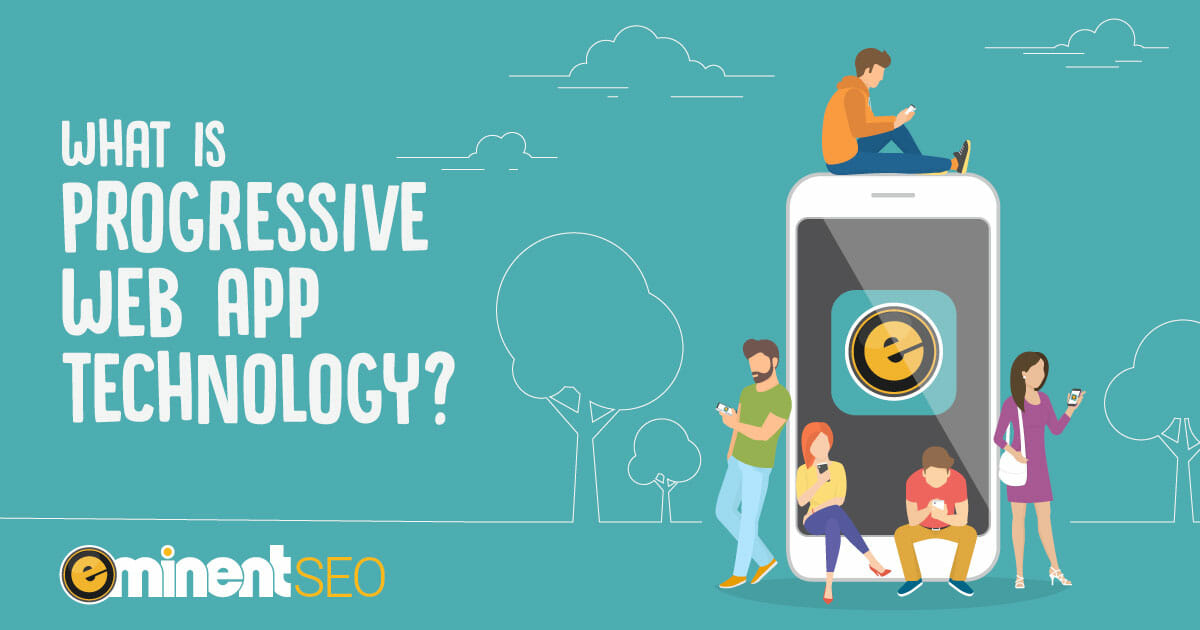For mobile and web optimization, having the best of both worlds is typically a far-fetched dream for businesses. However, in 2015, Google developers defied the status quo of mobile browsing by creating progressive web apps (PWAs). They resemble the mobile apps we are all used to, but are quite different: more accessible and no drain on your phone’s hard drive. A far-fetched dream is now a reality.
What Is Progressive Web App Technology?
Progressive web apps (PWAs) are a method of software development. PWAs differ from other applications because they unite traditional websites with mobile applications. Modern browsers, such as Safari and Microsoft Edge, offer extensive benefits that have not been usable through a mobile device in the past.
However, PWAs seek to fuse the features of web browsers with the convenience of mobile devices. The increased popularity of mobile device usage among consumers places a demand on companies to follow suit with mobile-friendly websites. While making a hybrid of the best of web browsing and mobile browsing is the goal, it’s also the primary challenge.
Mobile Sites vs. Mobile Apps
Mobile sites receive more traffic than mobile apps. Companies that are not well-known tend to do better with mobile sites than with mobile apps. An established or a widely known company can easily transition from a mobile site to a mobile app because customers are familiar with the brand and want to further interact with the company through a different interface.
However, lesser-known companies are 
While mobile sites are usually better for wider visibility, mobile apps consume more of a user’s device time. Mobile apps are useful for customers who have interacted previously with a business. That means most small, local businesses or B2B businesses would find mobile apps unprofitable. However, if a customer, or potential customer, has browsed a company’s website or entered the doors of a business, then a mobile app could be effective to keep a line of communication going.
For example, Schlotzsky’s has an app that tracks the number of sandwiches a customer has purchased, providing a visual countdown until the consumer reaches a free entrée. The app features much more, though, such as company updates, special offers, alerts, franchise locations and a menu. Since Schlotzsky’s is a nationally recognized business, a mobile app enhances its brand loyalty and communication with customers.
The Benefits of Progressive Web Apps
PWAs maintain the strength of a full-blown web browser without restricting mobility. The computer’s web browser isn’t reduced in power, just size. In the past, users might have hesitated to use their mobile device over a computer web browser due to the latter’s complex functionality and powerful processing system. However, pulling out a laptop while standing in line at the grocery store isn’t practical.
On the other hand, users loyal to their mobile devices objected to using computers or laptops for their bulkiness and long loading times. From their perspective, the convenience of reaching into a pocket and sending an email within seconds was more practical than commuting to their desk space to boot up a computer. However, to profit from the ease of mobile browsing, the hefty sacrifice of web browsing’s power was non-negotiable.
PWAs put an end to the past give-and-take of internet browsing commonly endured by the business community. Here are the benefits PWAs have to offer:
Push Notifications
Real time, fast updates of a user’s apps that summarize priority information instead of accessing an email address or waiting to log in on a computer.
Better Layout
More responsive arrangement and simpler navigation than the mobile version of a traditional website.
Offline Accessibility
The PWA runs continuously, even when offline. While working behind the scenes, it tracks the user’s actions, all without direct user communication.
Hardware Utilization
Hardware features such as geolocation, microphone and camera are embedded and accessible in PWAs.
Less Data Consumption
This means less lag time for users in delayed or restricted internet access locations. Less data consumption could also make a big difference when it comes to users’ monthly phone bills.
Community of Internet Users
PWAs don’t require a download and are free, making them more likely to attract a larger number of active users.
How to Optimize Progressive Web App Content
The future of online communication is paved by PWAs. App developers need to remain cautious of Google’s page indexing and implement correct coding methodology to counteract it. Companies should strive for a powerful online presence by utilizing the best SEO practices to inform users and retain customers.
PWAs supplement current websites but, at this time, are less effective independently. After a company’s website is established, bulked and refined, incorporating a PWA is the next business step.
Here are some tips to get started:
- Don’t send clients to an unsupported browser site.
- If supplying information from several URLs, utilize “rel=canonical” to avoid identical content violations in the eyes of search engines.
- Don’t use the AJAX crawling arrangement on original sites.
- Don’t use hashtags. Googlebot doesn’t store URLs that use this symbol, and several PWAs possess a hashtag (#) in their URL address. The result is erased content past the hashtag, or pound sign. The solution is to use a URL structure according to SEO best practices instead of URLs that include a hashtag.
- Ensure a website is viewable through the lens of Google. The Fetch and Render feature in Google Search Console accomplishes this task.
- Double check that sources are accessible, and not restricted by robots.txt.
- Limit hyperlinked sources, especially JavaScript files, to prevent partially loaded pages.
- Cautiously use JavaScript, as some search engines may be incompatible with it.
- Denote website changes with a sitemap file when utilizing Accelerated Mobile Pages (AMP).
If you feel like you’re ready to get started on your first PWA, check out Google’s dedicated Progressive Web Apps platform.
The Next Steps
Mobile apps were once the next step for companies with an established brand, and they’re still valuable in many cases. However, the recent creation of PWAs is the next logical step for most businesses, as they foster enhanced company communication, stronger brand loyalty and easier user navigation.
While the benefits of PWAs are staggering, the construction of such a website may seem overwhelming. That’s where Eminent SEO comes in. Eminent SEO can help build a new website from scratch – one that has mobile responsiveness and customized features for smartphones. To learn more, call us today at 800.871.4130.






Technology never ceases to amaze me. Every other say there are new developments and even more interesting things being talked about for future. Endless possibilities makes me even more curious. Wonderful insights here at your blog. Shall keep watching this space for more! 🙂
The possibilities truly are endless!!!!!!!!!!!!!!!!